Rudd's Apalis
Posted: Sun Mar 16, 2014 5:49 pm
649. Rudd's Apalis Apalis ruddi (Ruddse Kleinjantjie)
Order: Passeriformes. Family: Cisticolidae
Description
Size 11-12 cm, weight about 10 g. Olive back and uppertail. Grey head with white eyebrow and small black mask. White throat with a black line along the upper breast with yellow breast extending partway along the flank (less yellow in females). Females also have narrower breast band. White belly turning yellow again at the vent. Olive undertail with yellow tips to the tail feathers. The eye is dark brown.
Similar to the Bar-throated Apalis, which is lighter in color, has no eyebrow, and has a pale instead of brown eye.
Distribution
The main population is found between 22°S and 29°S on a broad coastal strip in southern Mozambique, north-eastern KwaZulu-Natal in South Africa, and eastern Swaziland; another isolated population is found in lowland southern Malawi.
Habitat
Coastal and riverine forests where it spends most of the time in the canopy. Generally found singly or in pairs.
Diet
It joins mixed-species feeding flocks. Forages actively for small insects and larvae, foraging at all levels of the forest, gleaning prey from leaves and twigs.
Breeding
Monogamous and territorial. The nest is an oval ball with an entrance near the top built by the male using grass and stems and camouflaged using moss, silk or lichen. One to three eggs are laid September to November. Nestlings are fed by both adults.
Call
Rapid tok-tok-tok-tok-tok. Listen to Bird Call
Status
Near-endemic and listed as Near-threatened.
Order: Passeriformes. Family: Cisticolidae
Description
Size 11-12 cm, weight about 10 g. Olive back and uppertail. Grey head with white eyebrow and small black mask. White throat with a black line along the upper breast with yellow breast extending partway along the flank (less yellow in females). Females also have narrower breast band. White belly turning yellow again at the vent. Olive undertail with yellow tips to the tail feathers. The eye is dark brown.
Similar to the Bar-throated Apalis, which is lighter in color, has no eyebrow, and has a pale instead of brown eye.
Distribution
The main population is found between 22°S and 29°S on a broad coastal strip in southern Mozambique, north-eastern KwaZulu-Natal in South Africa, and eastern Swaziland; another isolated population is found in lowland southern Malawi.
Habitat
Coastal and riverine forests where it spends most of the time in the canopy. Generally found singly or in pairs.
Diet
It joins mixed-species feeding flocks. Forages actively for small insects and larvae, foraging at all levels of the forest, gleaning prey from leaves and twigs.
Breeding
Monogamous and territorial. The nest is an oval ball with an entrance near the top built by the male using grass and stems and camouflaged using moss, silk or lichen. One to three eggs are laid September to November. Nestlings are fed by both adults.
Call
Rapid tok-tok-tok-tok-tok. Listen to Bird Call
Status
Near-endemic and listed as Near-threatened.
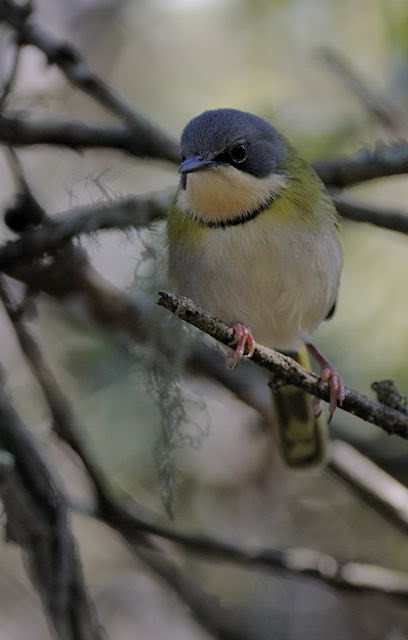
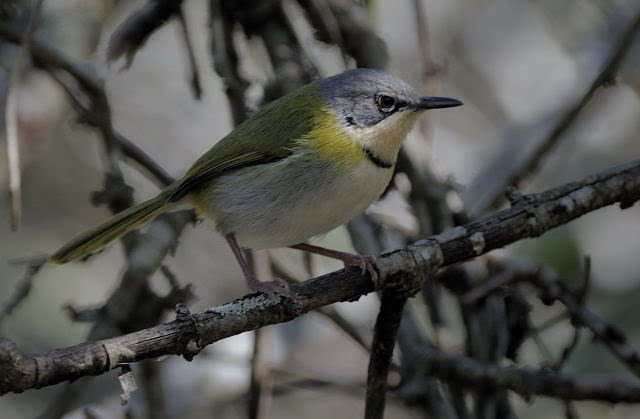


 © Dewi
© Dewi © Dewi
© Dewi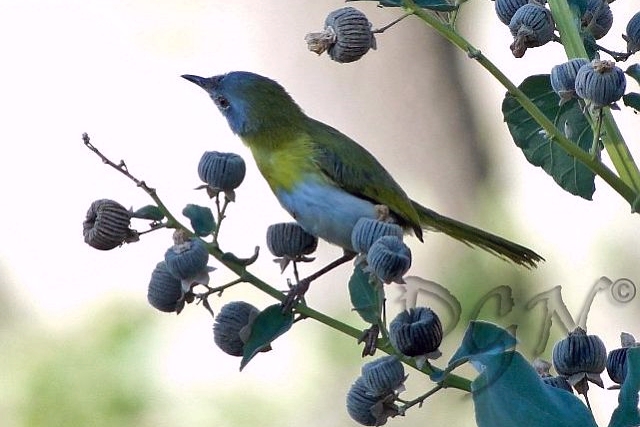 © JustN@ture
© JustN@ture © BluTuna
© BluTuna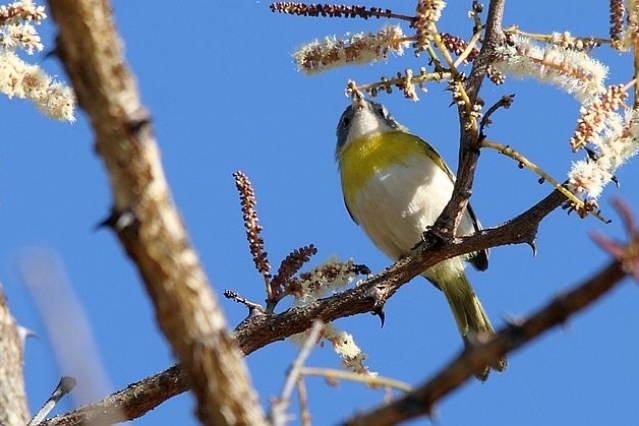 © Flutterby
© Flutterby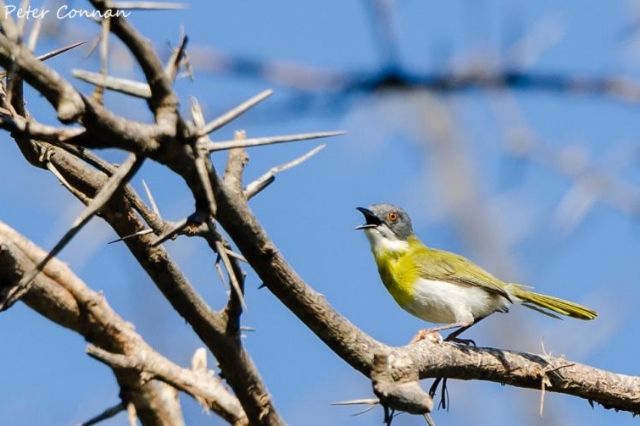 © Peter Connan
© Peter Connan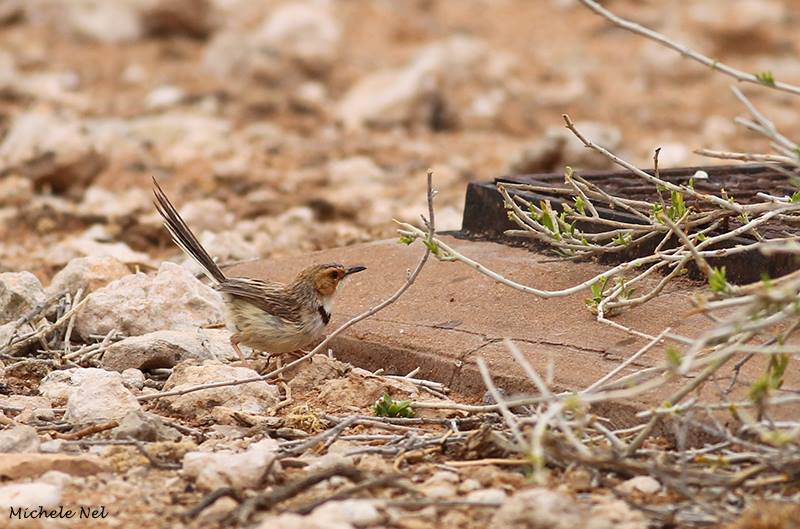 © Michele Nel
© Michele Nel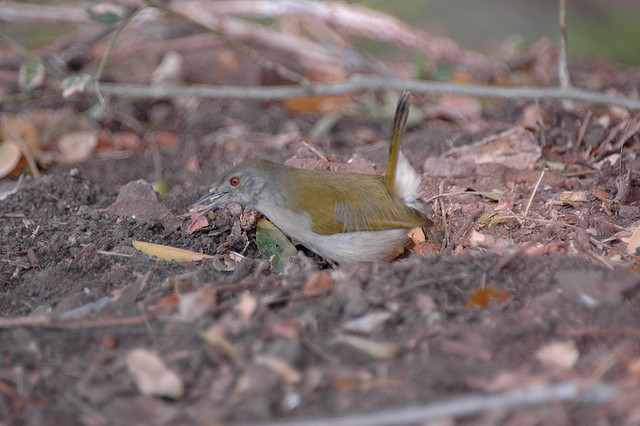 © Grumpy
© Grumpy © Grumpy
© Grumpy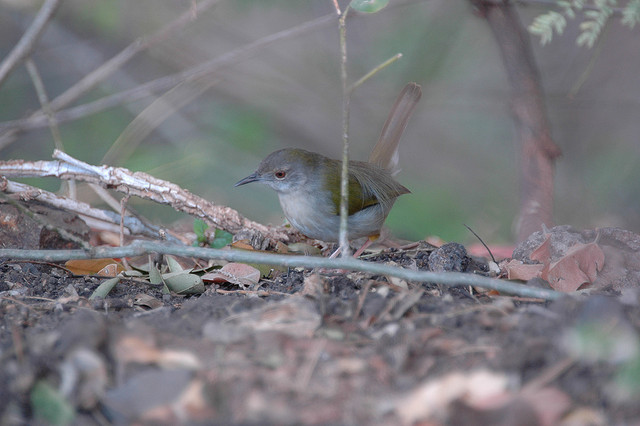 © Grumpy
© Grumpy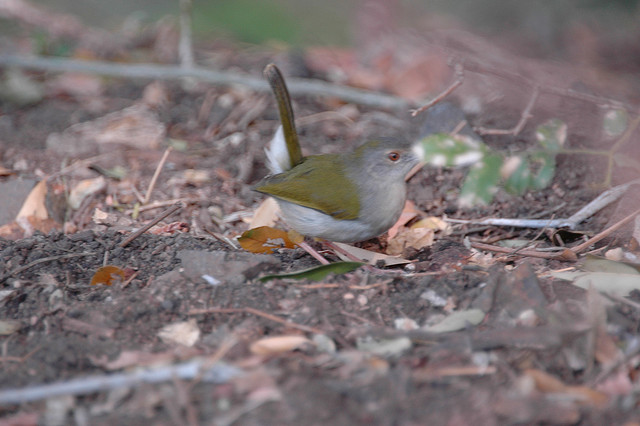 © Grumpy
© Grumpy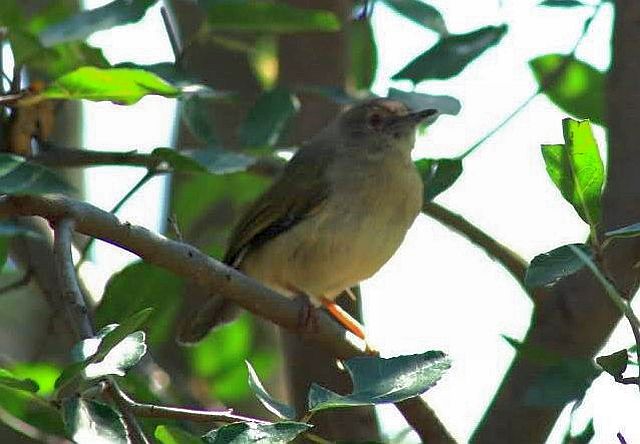 © Flutterby
© Flutterby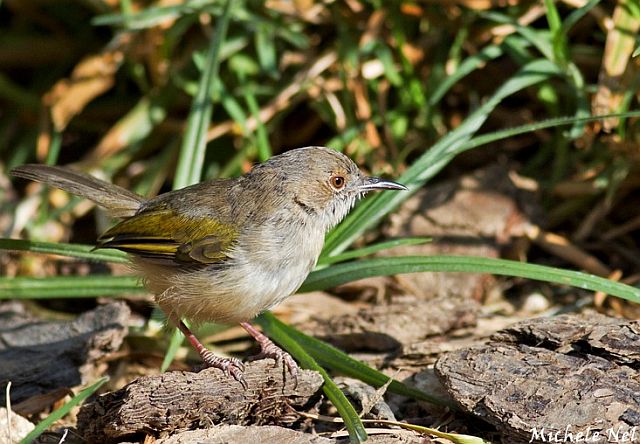 © Michele Nel
© Michele Nel